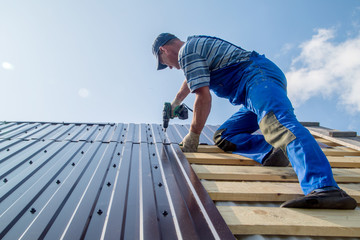If you leak in your roof, there are many ways you can take care of it on your own. You can use a garden hose and stop the leak. It is important to know the causes of the leak and the types of repair you should look into.

When you hear water dripping from your roof, it is time to call a professional Roof Repairs Tampa to find out where the leak is coming from. Luckily, a little effort and a few simple steps will help you locate it.
It would be best if you inspected your attic for signs of moisture. You can also check around your roof for stains and other visible indications of a leak. If you have access to your attic, turn off all the lights. Then, search for rays of sunlight that are poking through the attic.
Another option is to take a flashlight and check for water stains. Water stains can be caused by condensation, especially on nails. They may be small or large, but they are a common sign of a leak.
Most homeowners should have a regular maintenance program to keep their roof in mint condition. This should include inspecting the attic for leaks, holes and missing shingles. The attic is also the lungs of your house and should be inspected for mold and mildew. Keeping the attic cool will help to maintain your home’s interior. Having a properly maintained roof will save you money in the long run. For example, did you know a poorly maintained roof can lead to the growth of fungus, mold, and mildew?
While you’re at it, you’ll want to thoroughly inspect your gutters and downspouts to ensure they are free of debris. If your gutters are blocked by debris, it’s a good bet that your gutters are not emptying your attic’s contents. Moreover, you may have to call a professional to get your gutters cleaned and repaired.
Leaks can cause significant water damage. If your garden hose is leaking, the first thing you need to do is check for the source of the leak. If you’ve identified the leak, you should then fix the problem.
Oftentimes, the root of the leak is caused by a broken connection. This may occur at the connector, the nozzle, or the coupling. These issues can be easily fixed.
You can repair your hose by purchasing a hose repair kit. These kits come with everything you need, including a connector. They also contain instructions on how to connect the new coupler.
The hose gasket tends to wear with age. In order to prevent leaks, you need to replace the gasket at least once every three to 10 years. It’s important to follow the manufacturer’s instructions for maintenance and care.
Flashings prevent water from seeping through. Flashing is a thin, waterproof material that is used to protect your roof from water. It is placed around joints and crevices to prevent rainwater from seeping into your home. Several different materials are used, including metal, plastic, and polyethylene. Regardless of the type of material used, flashing should be installed tightly. This is the only way to ensure that water does not leak through the flashing.
Most buildings have some sort of opening. These can include a skylight or chimney. While not all types of roofs are susceptible to leaks, these features require extra protection.
A common cause of a roof leak is damaged flashing. High winds can pull the flashing away from the roof. Even if your flashing was in good shape when the roof was installed, inclement weather can take its toll.
Roofing manufacturers offer a number of warranties – from basic warranties for shingles and panels to extended warranties for special applications like solar. Roofing manufacturers offer warranties for the panels themselves. However, most warranties are worthless, and it’s best to take the time to do your homework and learn what you can about your warranty options.
The first thing to do is to check out your warranty packet – a document that should have been handed to you by your roofing contractor. Next, consider whether your manufacturer’s warranty offers a money-back guarantee or an outright replacement. If it doesn’t, find out whether your manufacturer offers a warranty transfer option. Another consideration is the length of your roof’s lifecycle. For instance, a lifetime warranty won’t likely cover you for the rest of your life, but a 10 year plan will do the trick.
